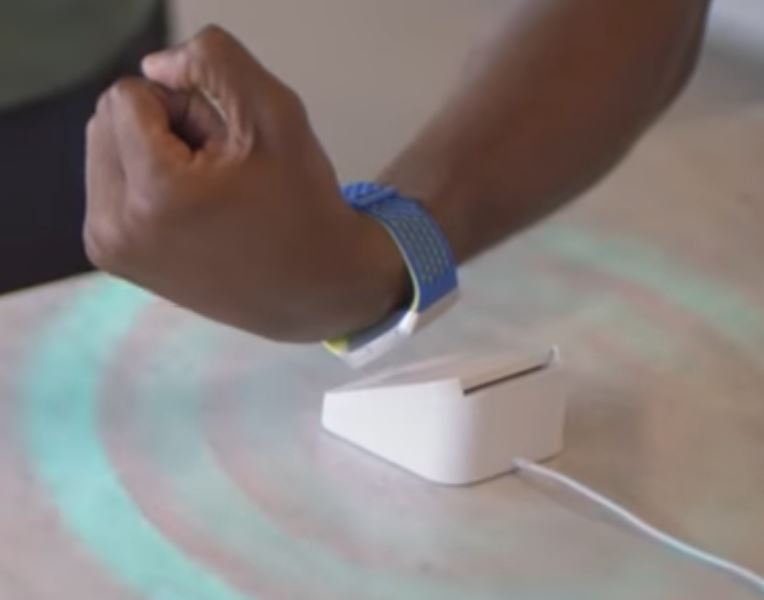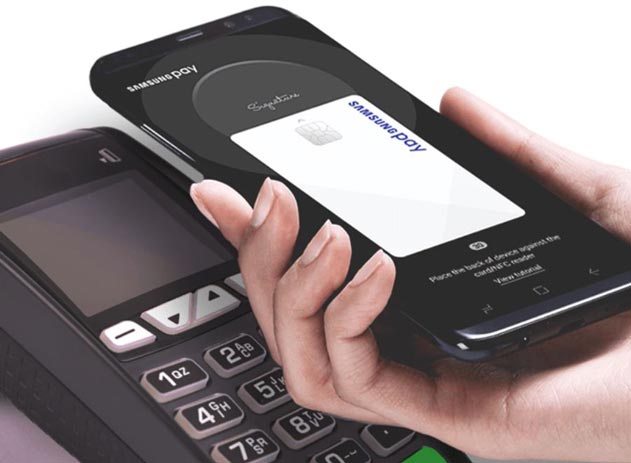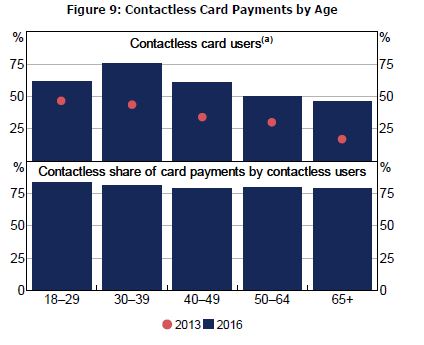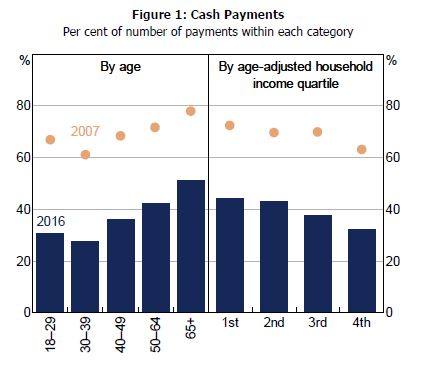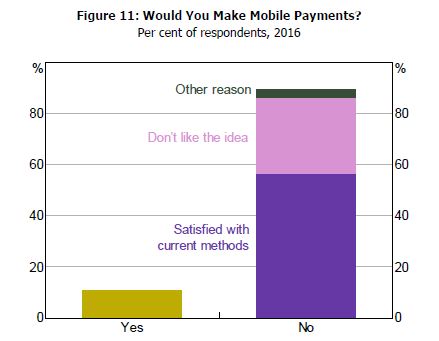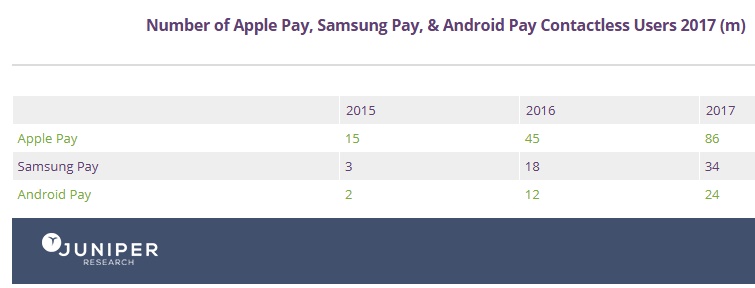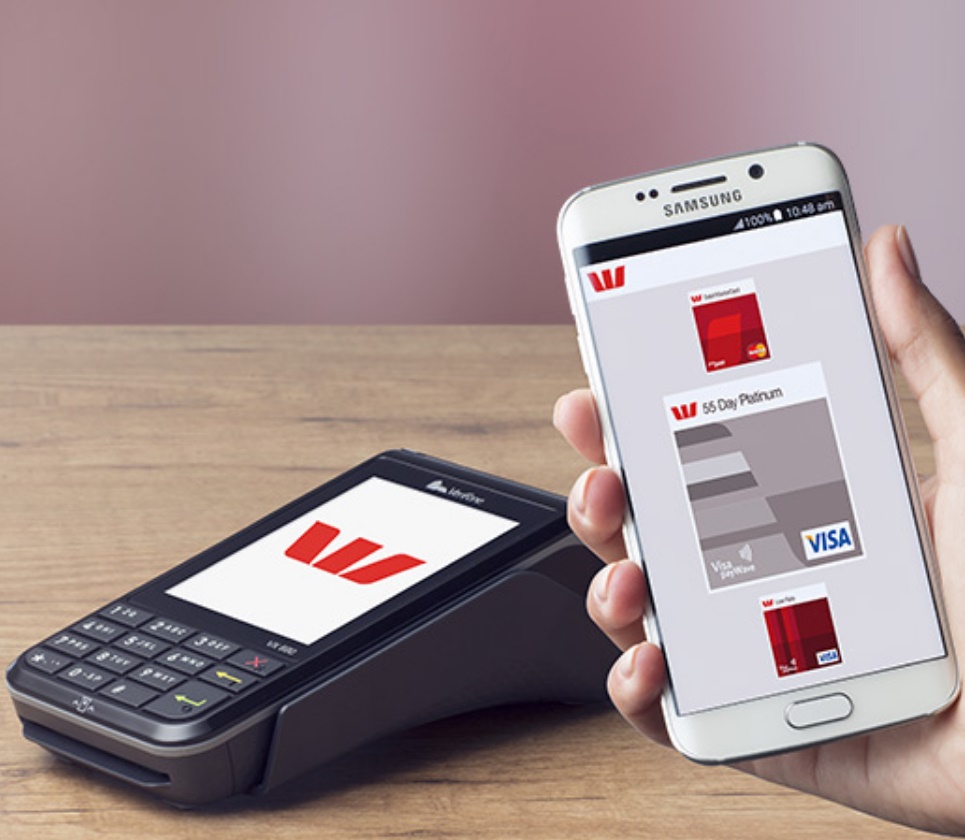Given the stalemate with Apple Pay, it is interesting to see the recent announcement that Westpac customers will soon be able to tap-and-pay hands-free with the announcement of a new wearable payment option, ‘PayWear’. “Westpac PayWear uses the same contactless payment technology as your Debit Mastercard®. You simply tap the accessory wherever contactless payments are accepted and the transaction will be debited from your everyday bank account”.
Westpac 'PayWear'
PayWear Essentials, available early December, includes a silicone band and a ‘keeper’, which can be easily attached to an existing watch or fitness band, containing a microchip (PayWear Card) linked to the customer’s everyday transaction account.
Customers can tap and pay in the same way they regularly do with their debit card, without having to reach for their wallet or smartphone, through the new range of waterproof and battery-free wearable accessories.
Westpac Group Chief Executive, Consumer Bank, George Frazis said customers across the country embrace greater convenience and expect to be able to simply tap-and-pay.
“Australia has the highest contactless penetration in the world, and cards continue to replace cash as consumers demand convenience. We’re always looking for new ways to help make our customers’ lives easier, and with our new PayWear products, customers will be able to pay on-the-go, in one hands-free step.
“With PayWear, there is no need to search through a bag, login to an app or worry about battery life. It will be on the go with our customers and ready for use when they are.
“When speaking with customers, personal style and choice were important. In fact, 70% agreed that they would only wear a wearable device if it suited their own personal style and lifestyle. This is why we will collaborate with iconic Australian designers to create a variety of wearable accessory designs to suit different tastes, preferences and styles,” Mr Frazis said.
The first Australian designer to be announced, who will design a range of unique products for Westpac PayWear, is award-winning surfboard shaper and entrepreneur, Hayden Cox of Haydenshapes. A range of leading Australian designers will be hand-picked to speak to a wide mix of everyday Australians – from surfers and fitness fanatics, to busy parents, professionals and festival-goers.
Hayden Cox says the opportunity to collaborate with Westpac has been a natural fit when it comes to designing products that are innovative, functional and stylish.
“Functional design is something I’ve always been passionate about – particularly technology and products that improve experiences for people. It was this passion which led me to creating and filing a patent on my parabolic carbon fibre surfboard construction, FutureFlex, and wanting to uniquely design my product to improve the surfing experience.
“Working with Westpac to create an exclusive range of wearable accessories which evolve the way people make contactless payments is exciting to me. This product signals an inevitable and innovative progression of our everyday routines. While some customers may opt for the simpler Essentials range, there is also a part of the market that will want something with a little more flavour. This is where the products I’m designing will sit.”
All Westpac customers with an everyday banking account eligible for a Debit Mastercard® will be able to order a PayWear Card online via Westpac Live, which can be inserted into the PayWear accessory of their choice. The PayWear Essentials range of wristband and keeper will be available from December. The Designer range is due to be available to customers in early 2018.
Westpac customers will be able to use PayWear to make purchases on all contactless-enabled terminals.
“Unlike many other wearable payment options, our customers don’t require an expensive device to access this technology. Customers will be able to get a PayWear Essentials accessory free of charge for a limited time, making it accessible to all our everyday banking customers,” Mr Frazis said.
The announcement of PayWear builds on the Westpac Group’s strong history of digital innovation, as the first to introduce internet banking to Australia, and the first in the world to deliver fingerprint sensor technology (Touch ID) to mobile banking logon in 2014.


